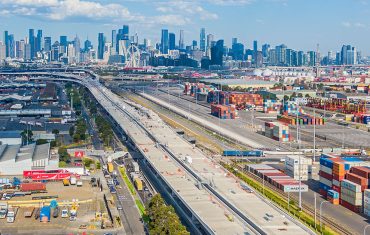
Freedom to move: envisioning a post-pandemic workforce
For your employeesIt won’t come as a newsflash to anyone that the impact of the COVID-19 pandemic will have far-reaching effects.
Some of them, like mandating the use of facemasks in certain situations, may have a limited shelf-life as our epidemiological understanding of the virus evolves and the efficacy of vaccines can be measured. Others, such as caps on social gatherings at live entertainment and sporting events, the fundamentals of how our workplaces are designed and hours of work are structured, may become more permanent.
In June 2020, global consulting firm McKinsey and Company initiated a comprehensive study designed to provide some insights into what the post-pandemic workforce – and workplace – could look like.*
As the report’s authors comment, “The results suggest that the crisis may accelerate some workforce trends already underway, such as the adoption of automation and digitisation, increased demand for contractors and gig workers, and more remote work. Those changes in turn will create greater demand for workers to fill jobs in areas like health and hygiene, cybersecurity and data analytics.”
So, what else did the report uncover? Here’s a high-level summary of the findings.
The future of work
One of the prescient observations from the report is regarding the nature of employment and the types of work that will be available. Not only has COVID-19 thrown millions of individuals into unemployment but the mix of jobs that will emerge from this crisis is likely to be different than those that were lost.
“People with the lowest incomes and educational attainment have been disproportionately affected, putting strains on achieving inclusive growth and potentially raising income inequality,” the report says. “Small and midsize businesses and communities of colour, already more severely affected by COVID-19, are also more vulnerable to disruption from increased automation.”
Modelling accompanying the report’s findings shows, by 2030, “up to 30 to 40 percent of all workers in developed countries may need to move into new occupations or at least upgrade their skillsets significantly. Research further suggests that skilled workers in short supply will become even scarcer.”
This indicates that any company not joining the early adopters in addressing its underlying talent requirements may fall short of its digital aspirations. It could also result in senior managers missing opportunities to work collaboratively with employees to create a prosperous and fulfilling future for all stakeholders – including the communities where the company operates, its workforce and the wider society that ultimately sanctions its activities.
Working from home
Working remotely – or working from home – is not a new phenomenon. However, due to enforced shutdowns and other kinds of COVID-19 public-health measures, the shift to remote work has been grossly accelerated and this trend is likely to remain a major feature of the post-pandemic workforce.
The list of industries that have been able to absorb this shift heavily favours more professional sectors like banking and finance, science and technology, education, telecommunications, government and administrative support. Other occupations in sectors like retail, manufacturing, tourism and hospitality, agriculture, construction and transport have less scope to adapt to their staff working remotely.
McKinsey‘s research found, as the shift to remote working increases, a shift of 15 to 20 percent of workers spending more time at home and less in the office could have profound impacts. Some of these are likely to include a number of important economic consequences.
For instance, as well as a decline in demand for office space, increasing pressure on hospitality and retail in major cities (and, subsequently, employment opportunities), fewer people commuting between home and work every day will have major impacts on transportation and fuel costs and new vehicle sales figures.
Mobility in the workforce
Travel for work and recreation has been changed substantially by the global COVID-19 pandemic. As McKinsey’s authors note, safety is likely to take precedence over cost and efficiency in a post-pandemic world.
“Cost and convenience have traditionally played key deciding roles when customers choose transport modes,” the report says. “Now reducing the risk of infections is the top reason many travellers make those choices.”
Governments and policy decisions will also have a greater say in the ways in which we travel. This could mean relaxing emission standards, as has happened in the US, but it could also lead to more incentives encouraging people and organisations to switch to hybrid and electric-powered vehicles.
As the report states, “The Chinese government recently extended its support for new-energy vehicles by exempting them from a 10 percent purchase tax and maintaining subsidies for Chinese-branded electric vehicles (EVs) until 2022.”
“Likewise, Germany has increased its ‘environment bonus‘ for EVs to a maximum of €9,000 paid toward the purchase of a new car. Governments are also expanding their favourable policies to eco-friendly travel beyond cars. For instance, Italy is offering its citizens a bonus of €500 for buying a bike, which has led to sold-out bike shops.”
Public health policy approaches will also hold great sway over mobility trends: “Transport options that guarantee physical distancing will win out over others. In this environment, the use of private cars or biking, walking and shared micromobility could outpace public transport.”
In conclusion
The dramatic changes in our working life caused by the Coronavirus pandemic are not temporary; they have ongoing implications.
The spread of Coronavirus has accelerated a number of workplace trends with which we are still coming to terms: automation and digitisation, remote working and mobility. For management, this means looking at their workforce in new ways as a result of the gear-change COVID-19 has enacted.
As people look for ways to minimise their risk of exposure to – and chance of contracting – the virus, safety will have a greater say in how we work, how we travel and how businesses deliver goods and services to customers and suppliers.
*While this report is primarily US-focused, its findings can be still applied to other developed nations, reflecting the global nature of the pandemic and its ensuing change.
For help in reviewing the way you will keep your workforce mobile in a post-pandemic world, talk to LeasePlan.
 Driving Insights
Driving Insights



